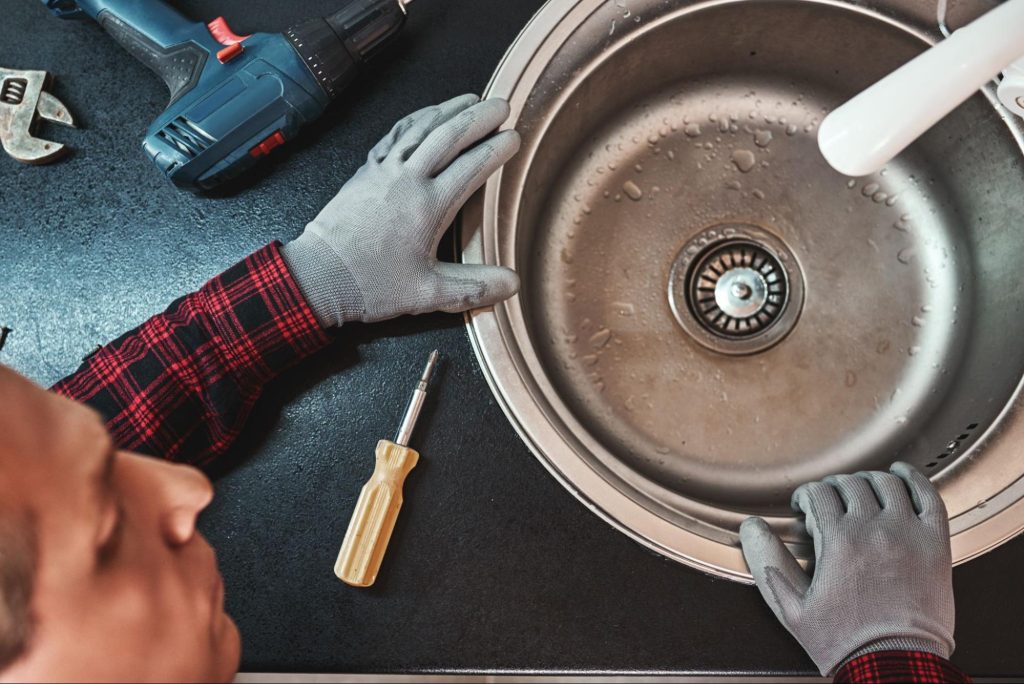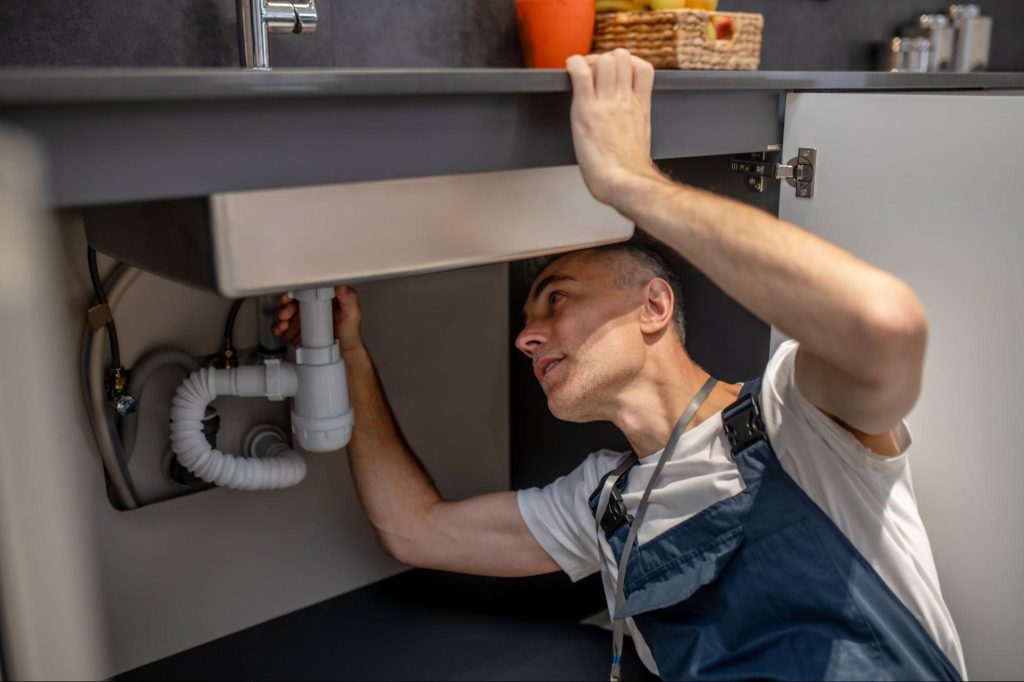Most people are unaware of the amount of water their sinks waste daily. A small drip or leak might not seem urgent, but it adds up quickly. Wasted water doesn’t just inflate your utility bill. It stresses both plumbing systems and the environment. Fixing the issue is often simple, fast, and affordable. A well-timed sink repair can instantly reduce waste and improve your home’s overall water efficiency.
Why Sink Repair Matters for Water Efficiency
Even the slightest flaw in your sink setup affects water usage. What seems like a harmless leak or slow drain can waste gallons every day. Left unresolved, these problems make your plumbing work harder and less efficiently. Sink repair helps reverse these losses before they become more costly.
Leaks Waste More Than You Think
A single dripping faucet can waste over 3,000 gallons per year. That’s water you’re not using but still paying for month after month. Beyond your budget, it strains local water systems, especially during dry seasons. Leaks also make your home less eco-friendly. Taking care of them is one of the easiest ways to conserve water.
Faulty Components Reduce Water Flow Control
Old or worn-out parts, such as washers and cartridges, don’t regulate flow well. When they wear down, water either dribbles unpredictably or gushes with poor control. It leads to splashing, overuse, and frustration. Replacing these pieces restores precise flow and pressure. A properly functioning faucet saves time and water with every use.
Unnoticed Damage Builds Up Over Time
Leaks inside cabinets or under the sink often go unseen. Over time, they cause wood to swell, metal to rust, and mold to grow. This damage gradually escalates into structural problems that are more difficult to repair. Water loss also continues in the background, compounding the problem. Early repairs keep the issue small and manageable.
How Professional Sink Repair Boosts Water Savings
Getting a professional involved means more than just fixing the visible issue. Skilled plumbers examine the entire sink system and identify hidden inefficiencies. Their work helps your plumbing function more efficiently and for a more extended period. Proper sink repair creates lasting improvements in water conservation.
Precise Diagnosis Saves Time and Water
Experts use advanced tools to find even the tiniest leaks. They quickly spot worn seals, cracked fittings, and pressure issues. DIY approaches often miss these subtle problems. Fixing the root issue promptly prevents water waste from persisting. That’s why professional inspections typically yield faster results.
Modern Fixtures Use Less Water Efficiently
Upgrading your sink hardware can reduce your water usage by up to half. Low-flow aerators, touchless faucets, and eco-valves utilize clever design to minimize water usage. These fixtures provide just the right amount of water for the task without waste. They’re also built to last, reducing future maintenance needs. Professional installers ensure they’re set up correctly from the start.
Proper Repairs Prevent Recurring Issues
If you’ve experienced the same leak more than once, the original fix was probably not complete. Professionals secure fittings, balance pressure, and align components the right way. These adjustments reduce strain on your system and stop repeated problems. A reliable repair saves you time, money, and hassle in the long run. That’s peace of mind that no quick patch can match.
Sink Repair As Part of a Water-Smart Home Strategy
Efficiency doesn’t stop with the sink itself. It connects to habits, other fixtures, and the overall functioning of your plumbing system. Treating sink repair as part of a broader approach to water use leads to real savings. Every minor fix adds momentum toward a more sustainable home.

Pairing Repairs With Better Water Habits
Small changes, such as turning off the tap while brushing your teeth, make a difference. Using basins to rinse dishes and collecting cold water while waiting for it to warm also helps. These habits reduce daily waste when paired with functional sinks. Repairs make these actions easier to follow. Efficiency becomes a natural part of your routine.
Inspecting Other Fixtures at the Same Time
While repairing your sink, it’s a good idea to check other areas as well. Bathroom faucets, showers, and outdoor spigots may also have slow leaks. A full-home check prevents problems from slipping by unnoticed. Many plumbers offer bundled inspection services for this reason. It’s smart to handle multiple issues in one visit.
Monitoring Your Usage After Repairs
Once your sink is fixed, keep an eye on your water bill. Compare it to previous months to measure the improvement. Some homeowners install smart meters for more detailed feedback. Seeing the numbers change reinforces good habits. It proves that small changes add up.
Immediate Sink Repair Delivers Fast Water Savings
Fixing a sink doesn’t take long, but the benefits show quickly. The sooner you act, the more water and money you’ll save. Even simple repairs can bring noticeable improvements. Sink repair is one of the most efficient upgrades a household can make.
Waiting Costs More Than You Think
Delaying a repair often leads to deeper issues. A drip turns into a stream, and moisture spreads where it shouldn’t. What could have cost $80 might balloon into a $500 job. Seasonal changes also worsen leaks, as freezing or swelling pipes create cracks. Fast action avoids bigger messes and higher costs.
Sink Repair Can Align With Local Water-Saving Programs
Across the country, many local governments and water providers offer rebates for water-saving plumbing upgrades. If you’re repairing or upgrading your sink, this can help you save even more. Some cities reimburse part of the cost for installing low-flow faucets or replacing leaking fixtures. Others offer bill credits for meeting household efficiency standards.
Rebate Programs Encourage Smart Plumbing Upgrades
In places like California, Texas, and Arizona, residents may qualify for cash-back incentives when replacing old faucets with certified low-flow models. These rebates often apply to both kitchen and bathroom sinks. Some programs require a professional installation, which aligns well with hiring a plumber. Documentation is typically straightforward, requiring only a receipt and the model number. Combining a repair visit with an upgrade can make you eligible for these benefits.

Staying Compliant With Local Plumbing Codes
Older sinks or faucet setups might not meet current building codes. During a repair, plumbers often update your connections to meet safety and efficiency requirements. Doing this not only improves performance but also helps avoid fines or inspection issues in the future. In rental properties or older homes, these updates are critical. A small investment in code compliance now can prevent bigger issues during sale or renovation.
Efficient Fixtures May Qualify for Certification Credits
Certain sink repairs and upgrades also count toward eco-certifications for your home. Programs like LEED and WaterSense recognize homes that reduce water consumption. Fixing leaks and upgrading fixtures can enhance your home’s eligibility for these programs. That can boost your property’s resale value or qualify it for sustainability perks. Even without selling, it’s a smart step for homeowners who value long-term efficiency.
Common Sink Repair Issues That Hurt Efficiency
Some sink issues may appear minor, but they can waste large amounts of water. Others are harder to spot but silently drain resources. Identifying these problems helps homeowners know what to watch for. Acting early prevents waste and avoids larger expenses down the road.
Constant Drips from Loose Handles or Faucets
Handles that jiggle or don’t shut off properly allow slow leaks. Even a light drip wastes dozens of gallons each week. Over time, that adds unnecessary cost and usage. Tightening or replacing these parts restores tight seals and smooth function. These quick fixes pay off almost instantly.
Low Pressure From Mineral Build-Up
If your water trickles instead of flows, your faucet may be clogged. Minerals from hard water often block the aerator or pipe openings. This forces you to run water longer for simple tasks. Cleaning or replacing these parts restores pressure and improves efficiency. Regular maintenance prevents a build-up from slowing things down again.
Leaky Pipes Beneath the Sink
Water leaking under the sink often goes unnoticed until the damage has spread. Cracked pipes or failed seals slowly release water that soaks cabinets and subfloors. It not only wastes water but also increases the risk of mold and rot. Repairing or replacing these parts stops hidden leaks at the source. It also keeps your home safer and cleaner.
Worn Seals and Connectors
Rubber seals and gaskets lose flexibility over time. When they crack or shift, water begins to escape from the connections. These tiny gaps are often the source of mysterious leaks. Replacing old seals strengthens every joint and pipe under the sink. It’s a minor fix with a major effect on water use.
Schedule Sink Repair and Cut Waste Now
Every drop from a faulty sink drains your wallet. Each day you wait adds up in gallons and dollars. Repairing now means cleaner water use, lower bills, and less hassle later. It’s not about big renovations; it’s about fixing what’s already broken. Book a professional now and stop the waste before it grows.
Want more ways to cut water waste and costs? Explore the Prestige—Plumbing, Heating, and Cooling blog for trusted tips and real solutions.

